China
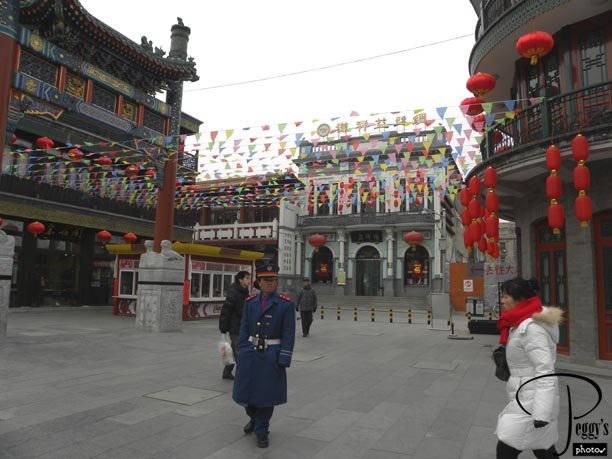
The first half of this February was both the best time to visit China and also the worst time––best because China was festive, celebrating both Chinese New Year’s and the Spring Festival; worst because it was very cold to icy cold and even snowing. Ritz Tours had offered a 12–day, 10–night tour to China at an unbeliveably low price, so I jumped at the offer. My flight from LA left at 12:40 a.m. on Feb. 5, arriving about 12 hours later in Beijing (we actually arrived an hour before our scheduled time). However, there was a question at Beijing immigration as to whether I would be allowed into China––it took over 1/2 hour after everyone on my 747 were already through immigration before I was given the okay to proceed. I think the problem was that (the immigration officials declined to tell me what the problem was) my last name was spelled wrong on my Chinese visa. I had called Ritz Tours when my daughter discovered this and they called the Chinese embassy in LA about it. LA said it was okay because my passport numbers matched. But what is okay in LA is not necessarily okay in Beijing. Photo: Qian Men shopping area––showing a bit of China. The red balloons were to celebrate Chinese New Year’s.

China
Our Hotel
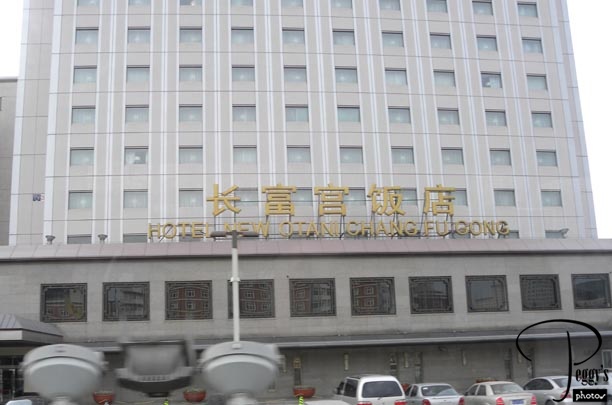
Our tour guide, Kathy (the Chinese guides leading Western tourists are asked to choose a Western name), met those of us flying to China on the same plane at the airport (6 of us plus one more who was living in China). As soon as we met her, we knew that our tour was going to be a great one. Kathy was one of the very best tour guides I have ever had (some photos of her later on). We stayed at 5–star hotels on the whole trip. Our 5–star in Beijing was the Hotel New Otani Chang Fu Gong, a joint adventure between Japan and China. There is no private property in China, so Japan is more the administrator of the hotel. It caters to Japanese businessmen.

Our Hotel
Lobby of Our Hotel
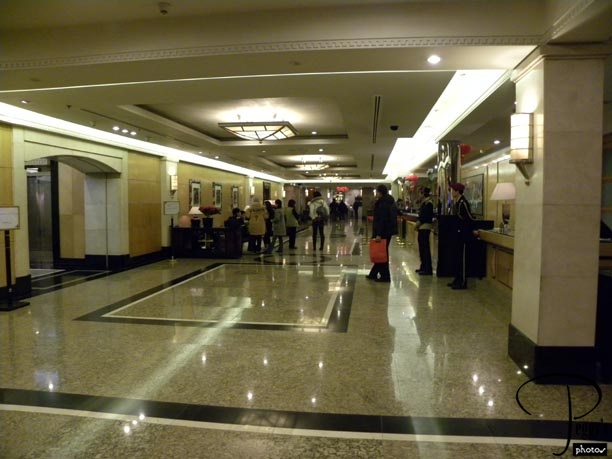
The hotel was quite swanky throughout with large hotel rooms. We arrived at the hotel about 5:30 a.m. and our rooms weren’t ready yet. We all needed breakfast.

Lobby of Our Hotel
Chinese Money
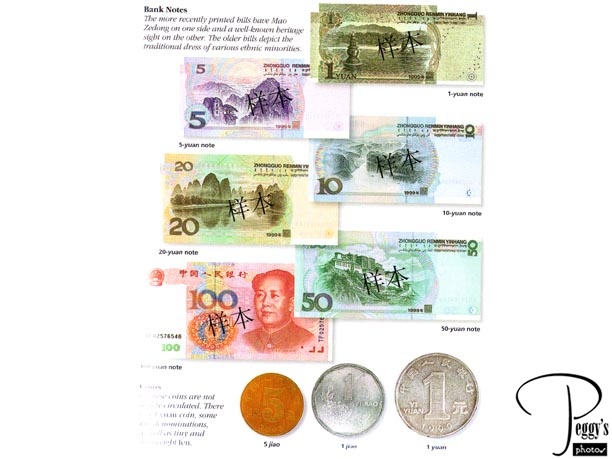
We were to eat outside the hotel so we needed to change our U.S. dollars into Chinese currency. It is recommended that you just bring dollars and exchange them in China. However, you need to be careful as to not change too much as if you want to exchange your money back to dollars you will only receive 50% back. Mao’s portrait was on almost all of the Chinese bills. The photo shows the denominations: each yuan is worth about 15 cents (actually a little bit less), so 10 yuan is about $1.50, 50 yuan about $7.50, and 100 yuan about $15.00. Sometimes, yuan is abbreviated RMB for renminbi.

Chinese Money
Chinese Money
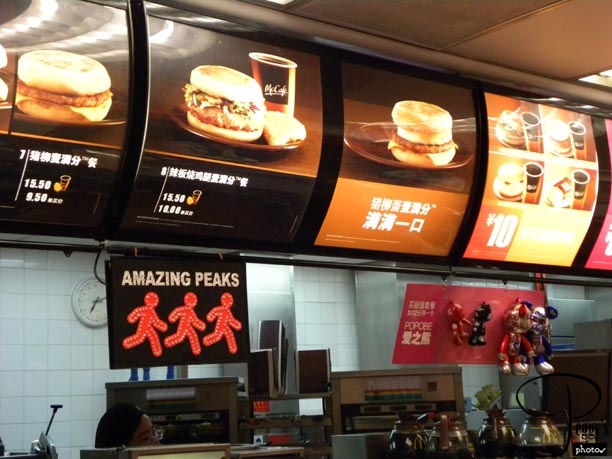
With our dollars changed to yuan, we all took off for McDonald’s a short distance away from the hotel. Yes, my first meal in China was at McDonald’s! I had scrambled eggs, bacon, hash browns, orange juice, and coffee. I don’t remember how many yuan it was––I was still getting use to Chinese money. However, from the sign shown in the photo, a Big Mac, hash browns, and drink costs 15.50 yuan or $2.33. Many things in China are unbelievably inexpensive but some things are not: For a day’s wifi at our hotel, it was $12. For 10 minutes of computer time, $9.

Chinese Money
On the Road
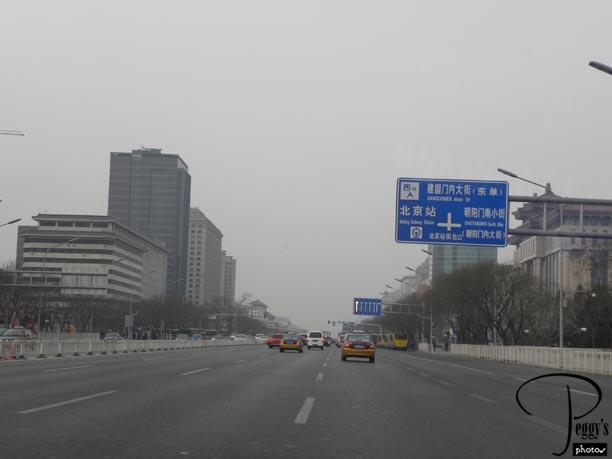
Our rooms were ready after we finished breakfast. I asked if anyone wanted to go sightseeing with me––Leng and Saiew, my new tourmates who are Chinese Cambodians and who live in Southern California, said yes. So we took off in a taxi at 10 a.m. to go to the Qian Men area near Tiananmen Square. I was so lucky to be able to hang around with Leng and Saiew. They both speak Mandarin and Saiew also speaks Cantonese, two more Chinese dialects, Thai, Cambodian, and English. Very few Chinese in the tourist areas speak English including taxi drivers, so Leng and Saiew were invaluable as sightseeing mates. I had the map. We never spent much over $3.00 for a taxi ride, most of the time less. Photo: On a Beijing street––very wide and very clean.

On the Road
On the Road
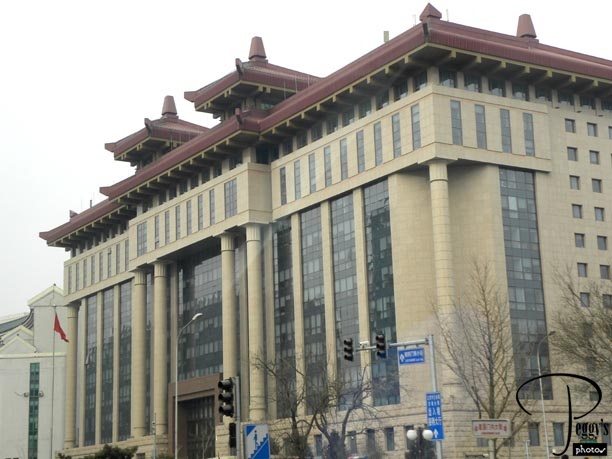
Many massive buildings.

On the Road
On the Road
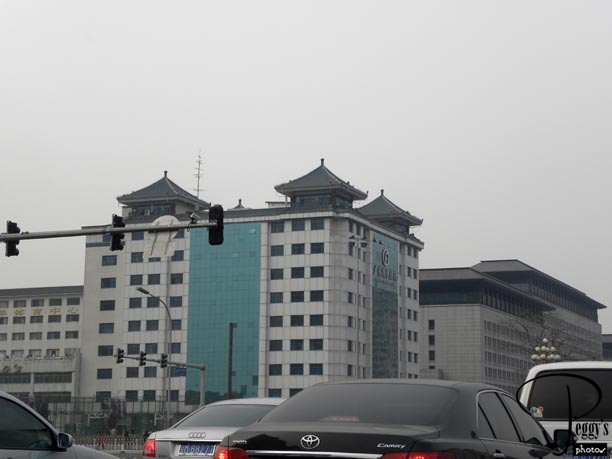
Another massive building.

On the Road
On the Road
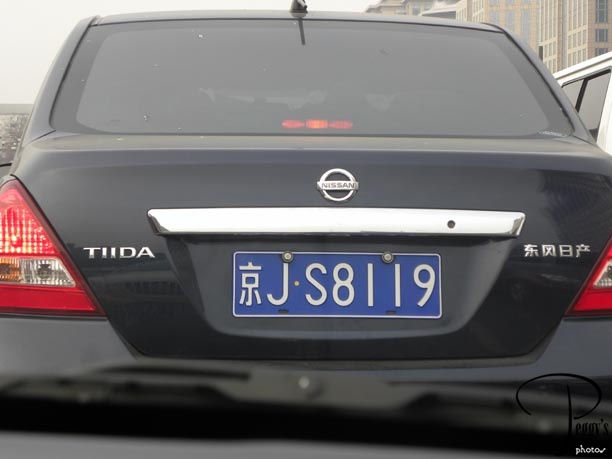
Cars are quickly replacing bicycles as the major form of transportation, resulting often in massive traffic jams. In Beijing, you cannot drive one weekday of the week––which day depends on the last number of your license plate. Most of the cars are Japanese. However, the cars are made in China. There is about a 100% duty on cars imported into China. Motorcycles are not allowed, though motorbikes are.

On the Road
On the Road

Another massive building.

On the Road
On the Road
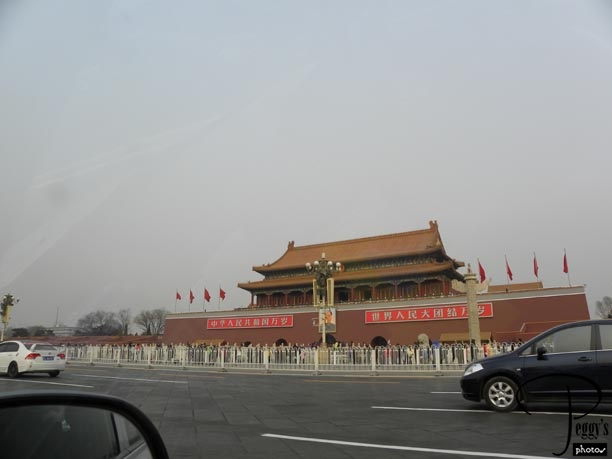
Tiananmen Gate with Mao’s picture on it. The Forbidden City is behind it.

On the Road
On the Road
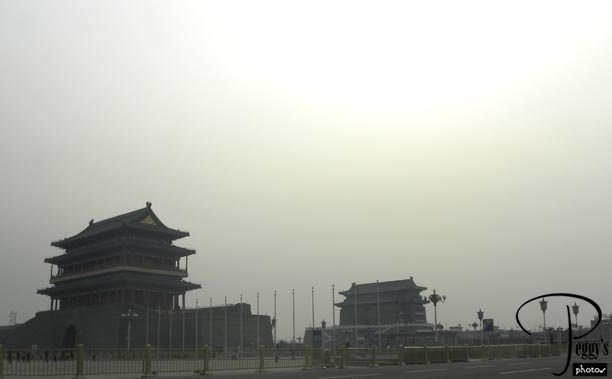
Another massive building.

On the Road
A Map
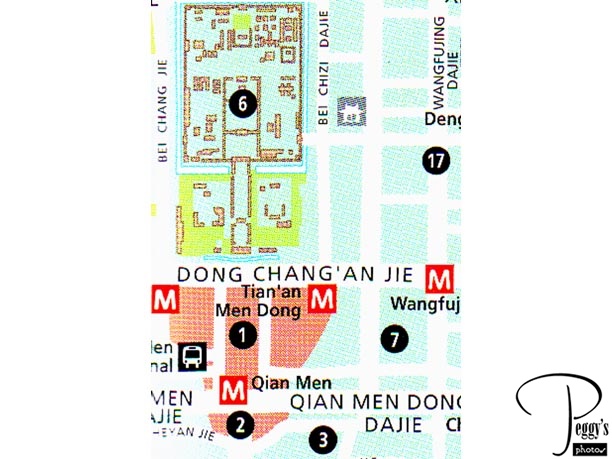
Tiananmen Square is no. 1 on the map. We started our day’s sightseeing around no. 2, below the Qian Men. After walking around Tiananmen Square, we walked to the east to the Wangujing Shopping Street, no. 17. No. 6 on the map is the Forbidden City. These distances look short on the map, but they are large distances. We must have walked miles today.

A Map
Leng and Saieu
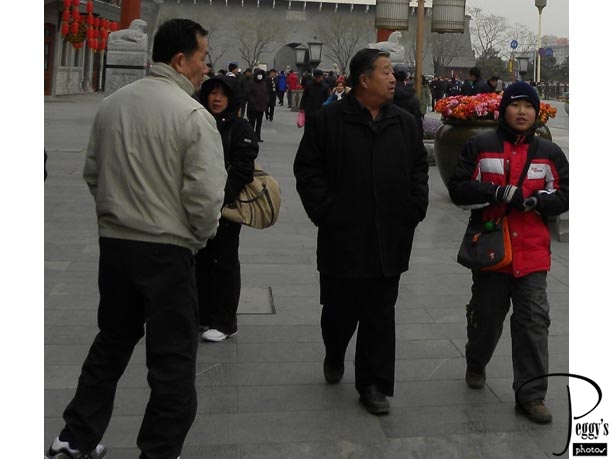
Leng and Saieu on the couple on the left. Better photos of them later on.

Leng and Saieu
Qian Men Area
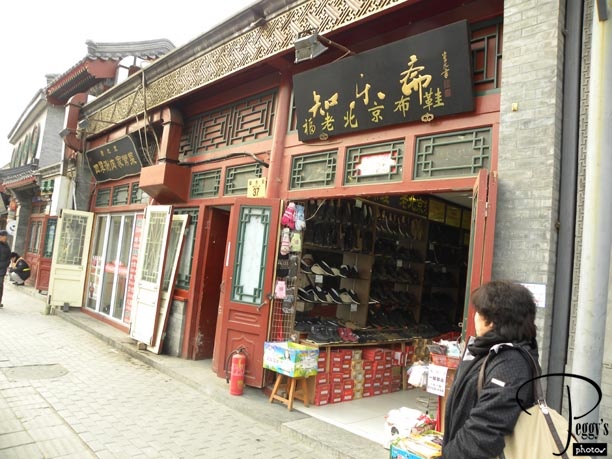
The taxi dropped us off here. You’ll notice in many of my photos that the walls of most buildings are gray in color––gray is “The People’s Color.” Much red is also used as it represents good luck.

Qian Men Area
Quien Men Area
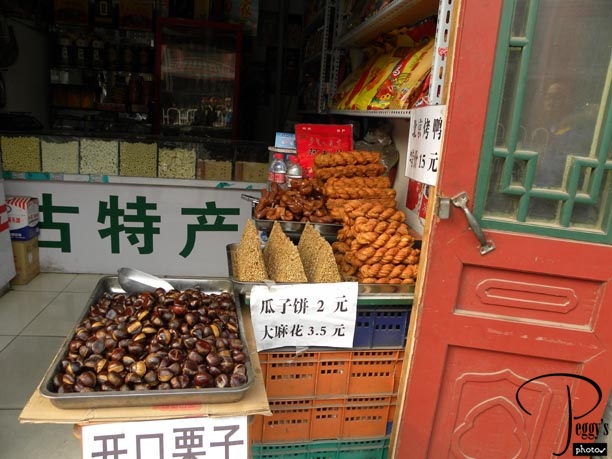
Chestnuts and other snacks for sale.

Quien Men Area
Quien Men Area
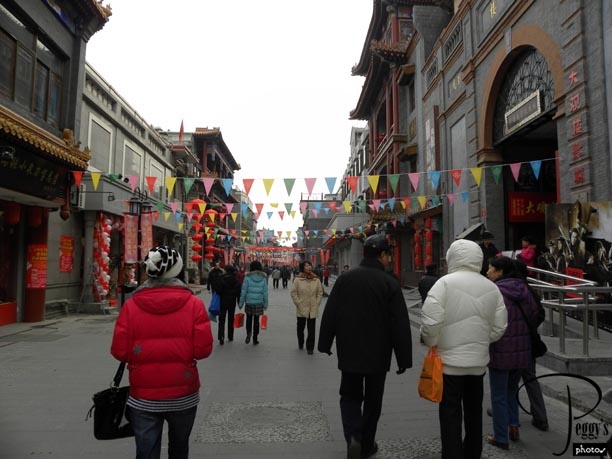
We crossed the street to enter a new shopping area on Chang’an Avenue (Forever Peace Street), mainly for the tourists, but not only Western tourists. There were extremely few Western tourists in China then, but thousands of Chinese tourists, mainly from the countryside. They were shopping or just walking here. I don’t think the domestic Chinese tourists have seen many Western faces. I was stared at almost continuously, but I got used to it. The Chinese also have no hesitation about bumping into other people, but I also got used to that. After all, I was a guest in their country.

Quien Men Area
Quien Men Area
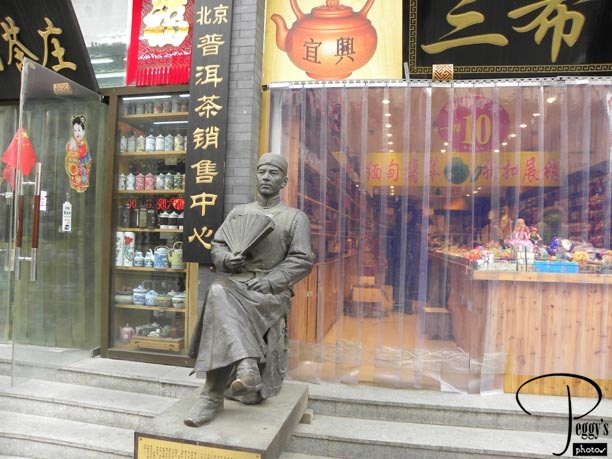
Chinese statue. Many stores do not have front doors and are open to the cold––Did I mention how cold it was today in China? Probably about 30 degrees F. Some stores hang plastic strips in the entrance ways to help keep out the cold.

Quien Men Area
Quien Men Area
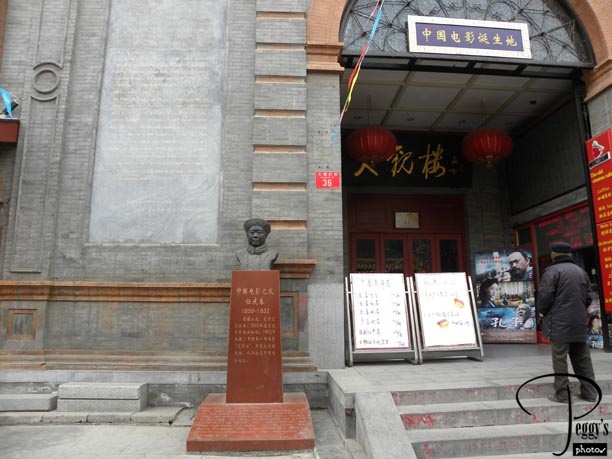
Another statue and that could be a movie theatre.

Quien Men Area
Quien Men Area
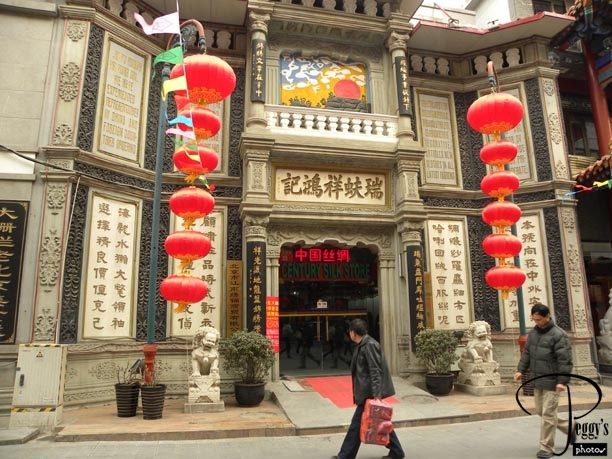
The Century Silk Store.

Quien Men Area
Quien Men Area
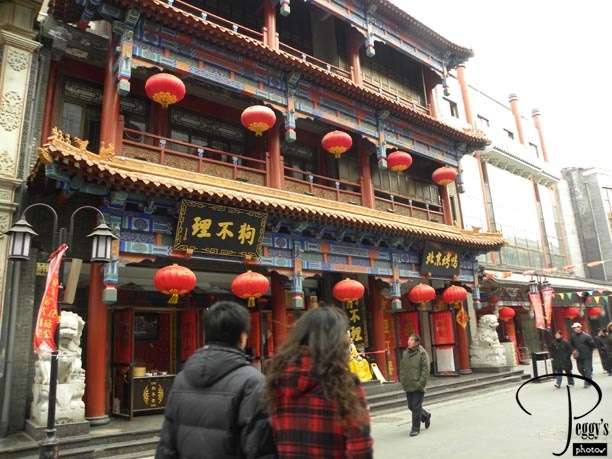
Chinese architecture and Chinese lanterns. If you visit China at another time of the year, you won’t see these festive lanterns.

Quien Men Area
Quien Men Area
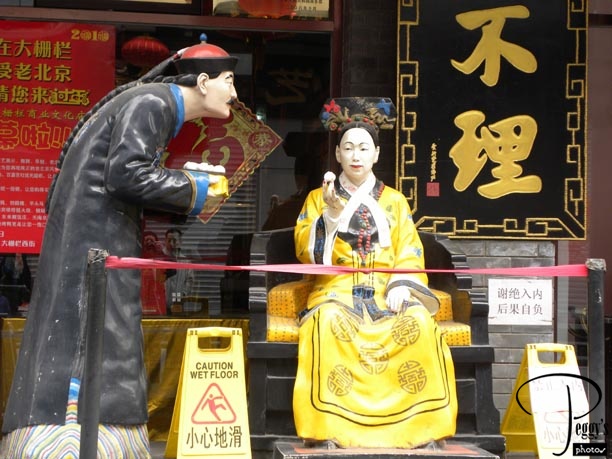
More statues.

Quien Men Area
Quien Men Area
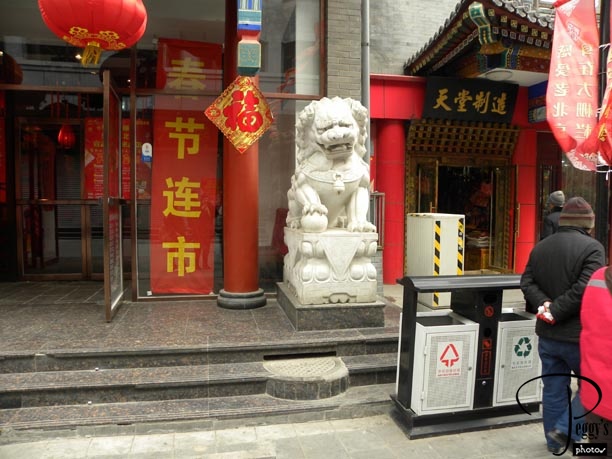
A male lion, always on the right. The female lion is always on the left––some photos of a female lion later on. The male lion has a ball, indicating strength, under his foot or elsewhere on the statue. The female has a baby under her foot. The lions are placed to ward off evil spirits.

Quien Men Area
Quien Men Area
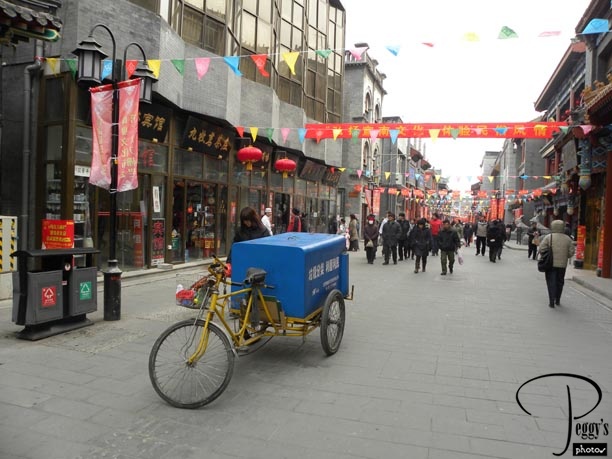
You see many of this type of bicycle transportation throughout China.

Quien Men Area
Quien Men Area
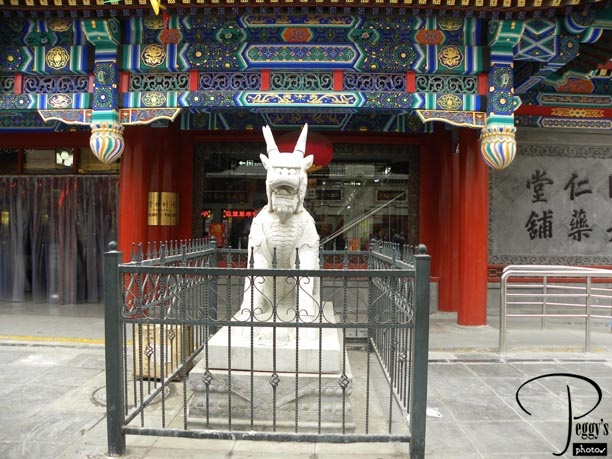
Another statue.

Quien Men Area
Quien Men Area
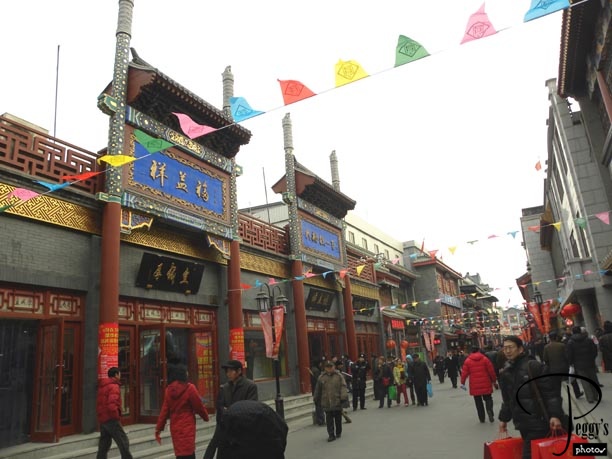
Walking farther up the street.

Quien Men Area
Quien Men Area
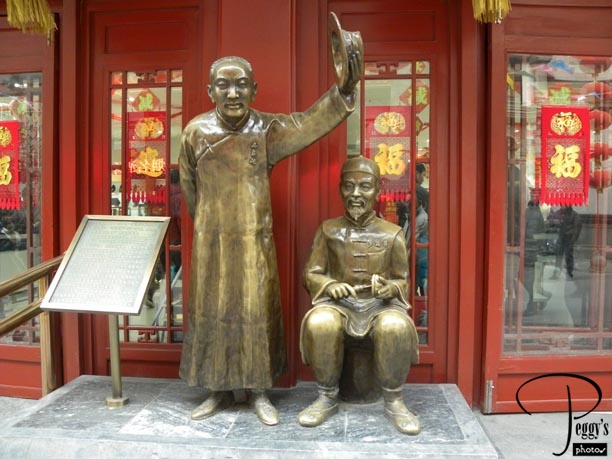
More statues.

Quien Men Area
Quien Men Area
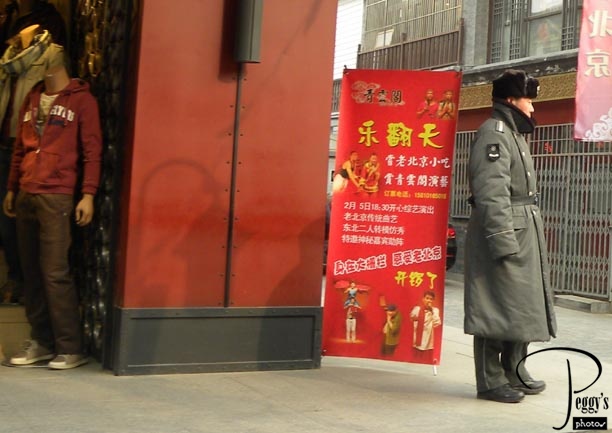
A Chinese policemen. There were always policemen around in many different uniforms. They looked cold and bored. But most of the policemen were very young men and didn’t look threatening at all.

Quien Men Area
Quien Men Area
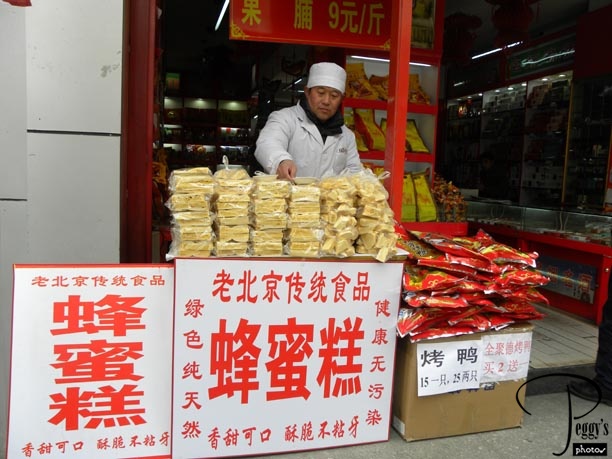
Snacks and Peking duck for sale.

Quien Men Area
Quien Men Area
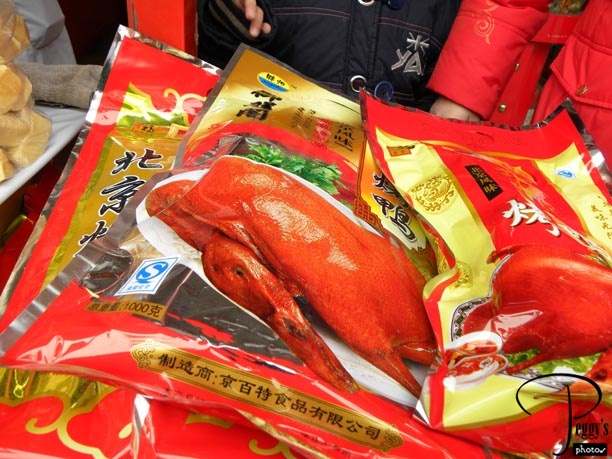
Packaged Peking duck.

Quien Men Area
Quien Men Area
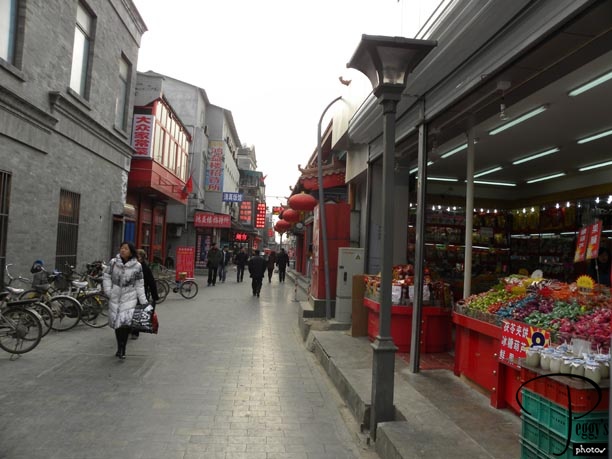
An alleyway off the main street.

Quien Men Area
Quien Men Area
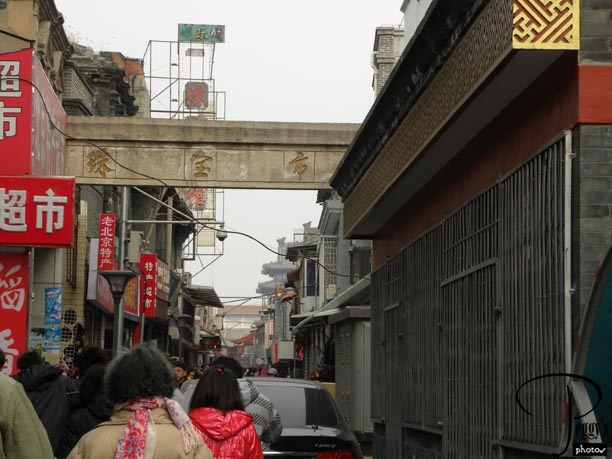
Another alleyway––it looks like the Old China.

Quien Men Area
Quien Men Area
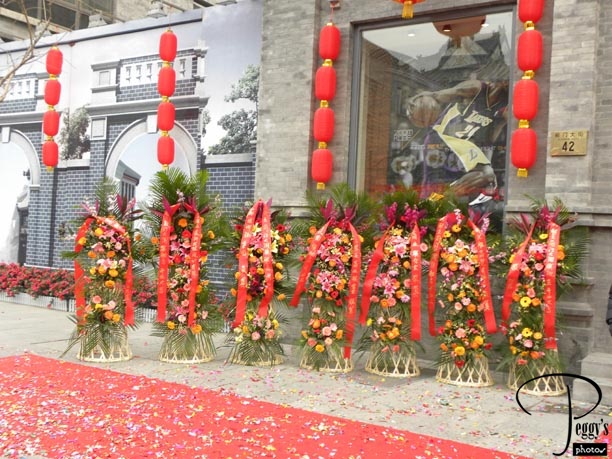
A new store has just opened: an NBA store, selling NBA jerseys, etc.

Quien Men Area
Quien Men Area
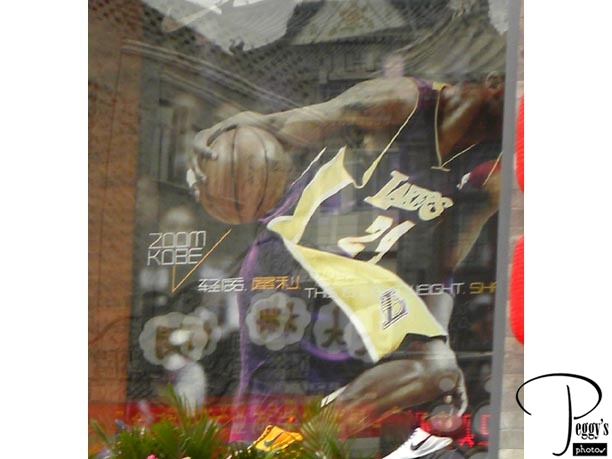
That’s an LA Lakers jersey in the window. Everyday in China, there were surprises, something very unexpected seen, such as this jersey.

Quien Men Area
Quien Men Area
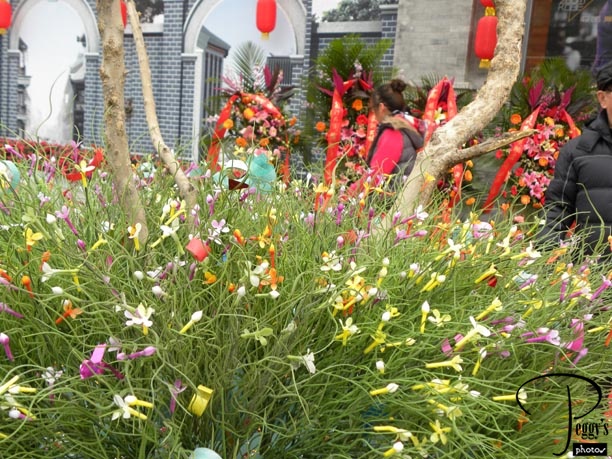
If it is too cold for real flowers, the Chinese use artificial ones to brighten up a street.

Quien Men Area
Quien Men Area
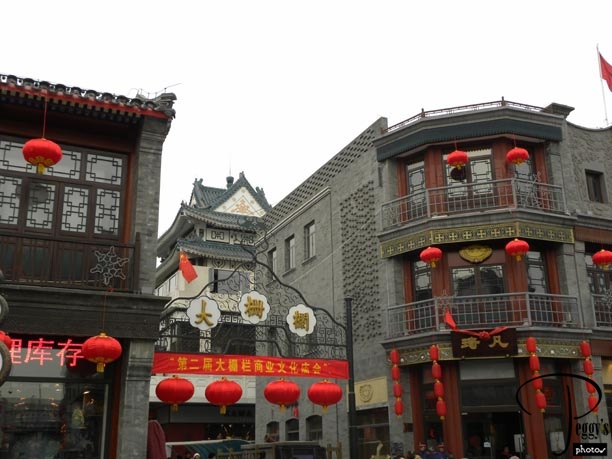
Farther along on the street.

Quien Men Area
Quien Men Area
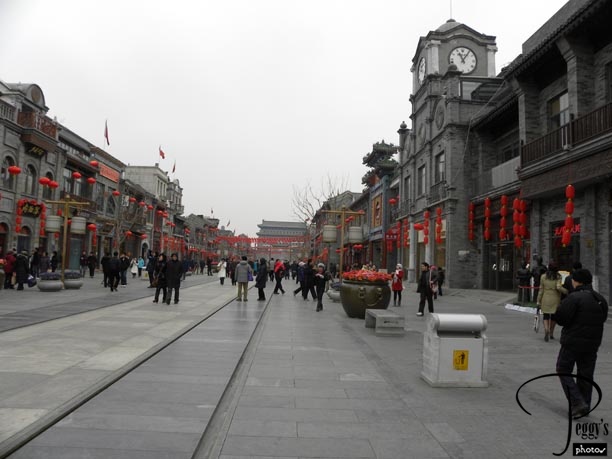
You can now see the Arrow Tower in the background.

Quien Men Area
Quien Men Area
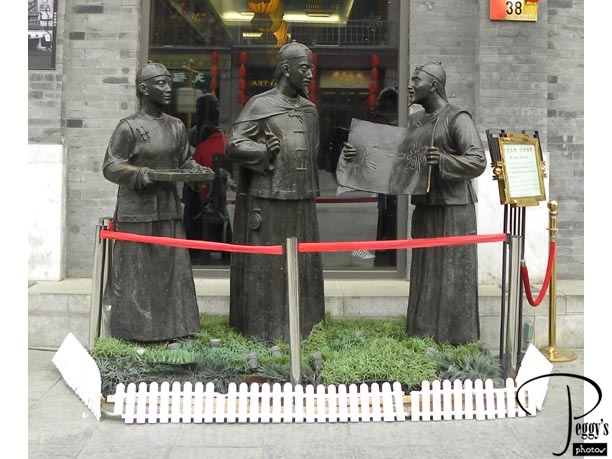
More statues.

Quien Men Area
Quien Men Area
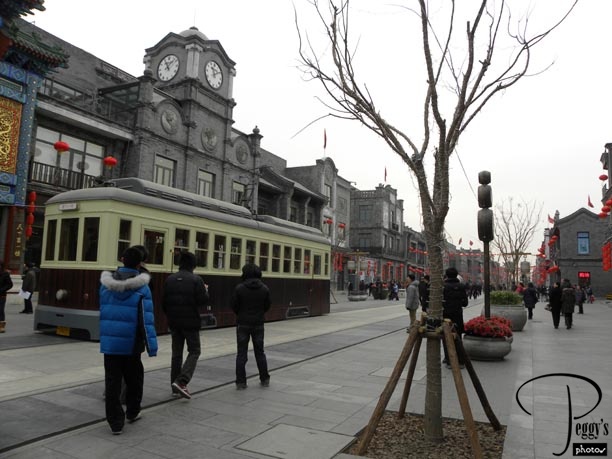
A new trolley for the tourists.

Quien Men Area
Quien Men Area
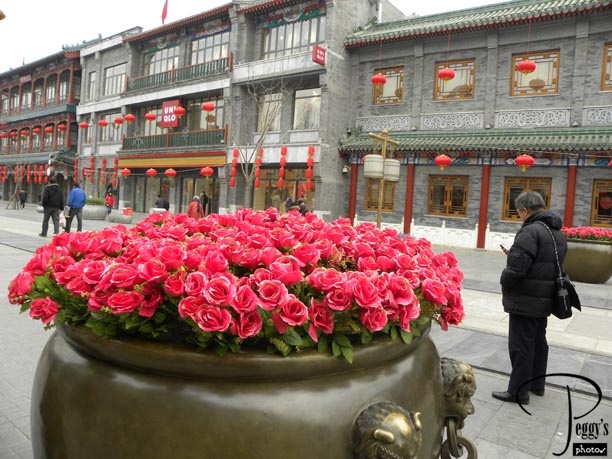
Pretty artificial flowers.

Quien Men Area
Quien Men Area
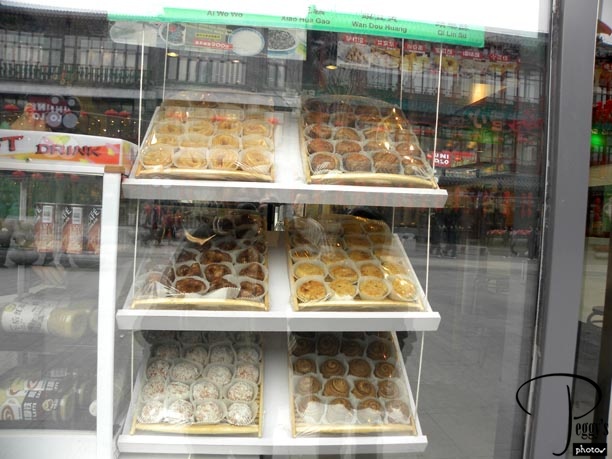
A bakery. Chinese bakeries are modern and offer many delicious treats.

Quien Men Area
Quien Men Area

Another side street.

Quien Men Area
Quien Men Area
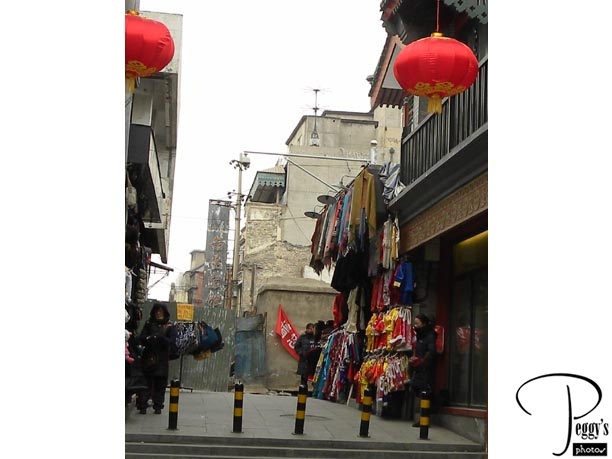
Close–up of the side street. You can see how old the buildings on it are. This was the type of buildings that were originally on the new street.

Quien Men Area
Quien Men Area
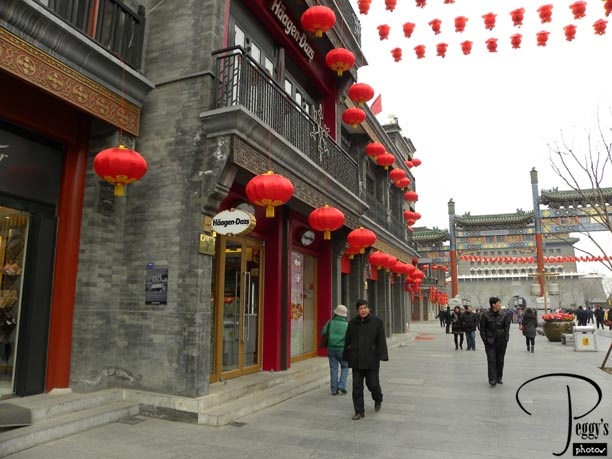
Getting closer to the Arrow Tower. Haagen Das ice cream store on the left.

Quien Men Area
Quien Men Area
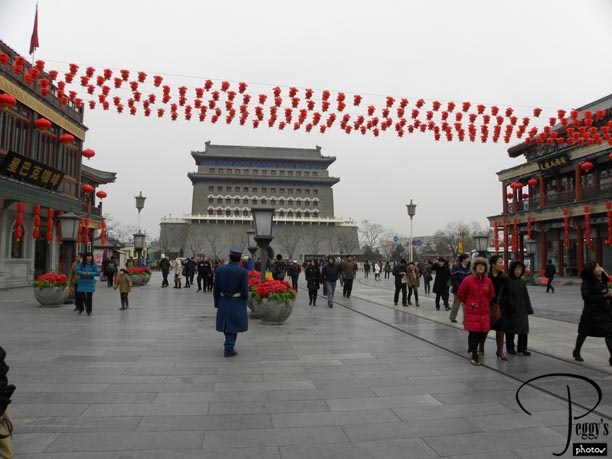
Looking backward.

Quien Men Area
Qian Men
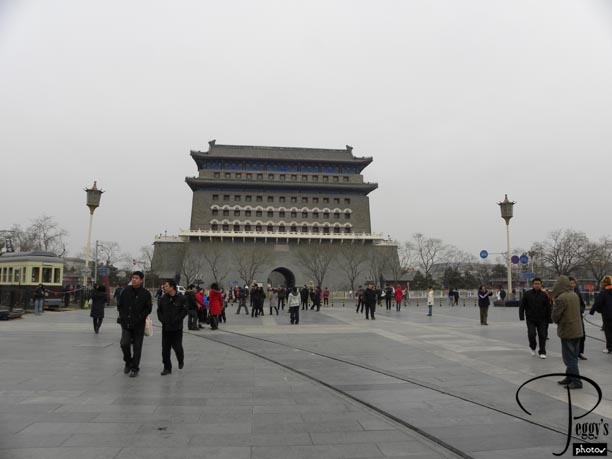
The Arrow Tower (Jian Lou), first built in the Ming Dynasty (1368–1644) in 1439. It was badly damaged during the Boxer Rebellion in 1900 and has been restored.

Qian Men
Qian Men
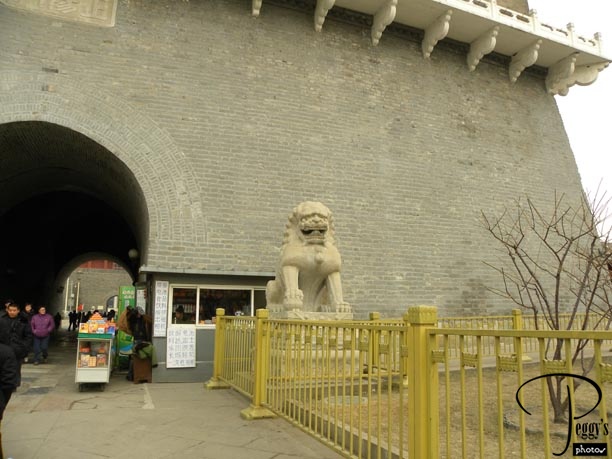
Approaching the Arrow Gate with male lion on the right.

Qian Men
Qian Men
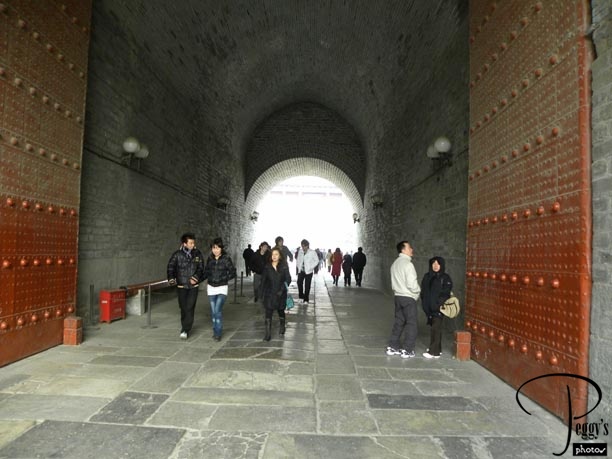
Walking through the Arrow Gate. Leng and Saieu on the right.

Qian Men
Qian Men

The Arrow Tower seen from the opposite side. You can walk up it.

Qian Men
Qian Men
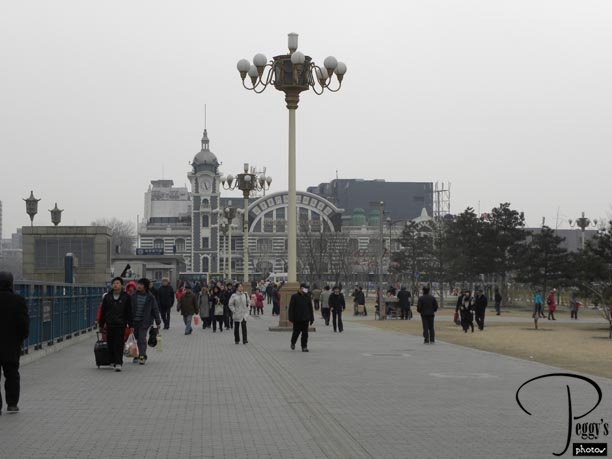
To the right is the Old Railway Station built by the British, now a shopping mall.

Qian Men
Qian Men
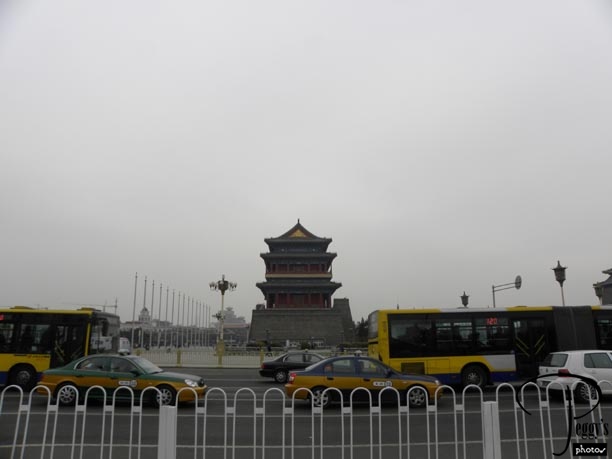
The Zhengyang Men, together with the Arrow Gate making up the Qian Men double gate. Here we got a little stuck. Between the Arrow Gate and the Zhengyang Men is a very busy street without crosswalks. We figured that we would have to go underground to pass under the street but didn’t see any entrance. So we walked to the west, past the Arrow Gate, and found stairs leading to an underground tunnel that would take us across the street.

Qian Men
Qian Men
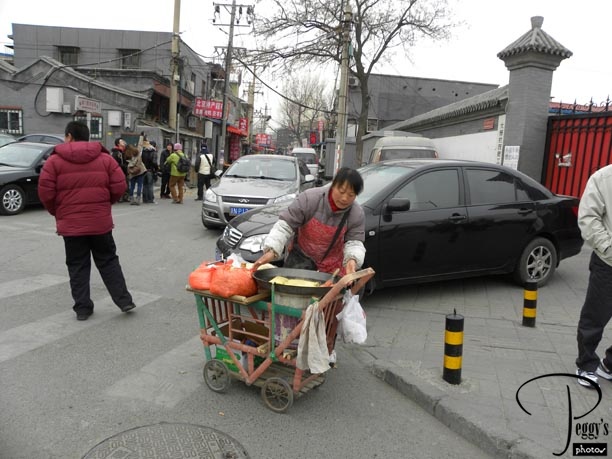
We ended up here.

Qian Men
Qian Men
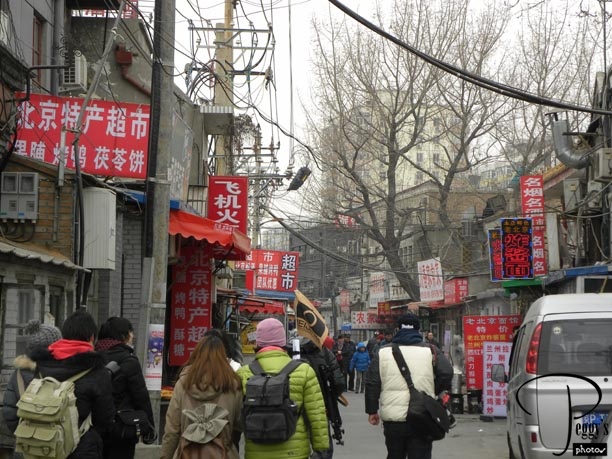
Closer–up view of the side street. We found the steps to take us underground under the next street and crossed it.

Qian Men
Qian Men

Now we are facing the Zhengyan Men. Tiananmen Square is in front of it. We again walked down steps to get into the underground tunnel to cross the street. We had to undergo an X–ray security check to continue in the tunnel. In other words, security is tight around Tiananmen Square. (Our visit to Tiananmen Square and Wangfujing pedestrian street will be on the next album.)
